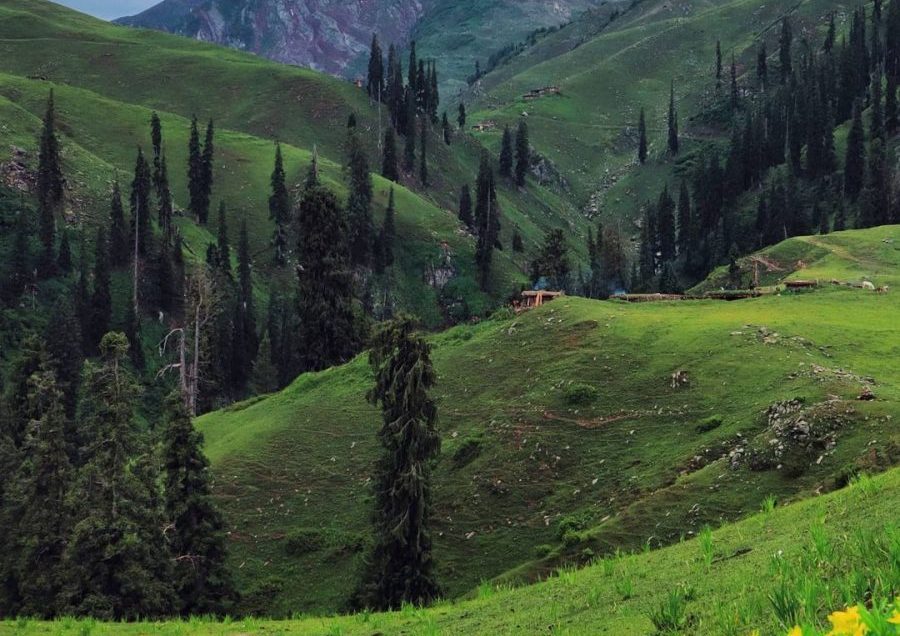Sirbaz Khan began working as a porter in his teens and has since conquered the heights of climbing, becoming the only Pakistani to ascend nine peaks over 8,000 metres (26,247 feet) in height, including the two tallest mountains in the world, Everest and the formidable K2.
Khan, who is from the picturesque Hunza Valley in the northern part of Gilgit-Baltistan, close to the Chinese border, hopes to climb every one of the 14 mountains in the world that are higher than 8,000 metres by the end of 2023 to join the select group of mountaineers who have accomplished the feat.
Only the tallest mountains have captured the 33-year-old climber’s attention since he started his professional climbing career in 2016.
He was the first person from Pakistan to reach the top of Mount Lhotse in Nepal in 2019, the fourth-highest mountain in the world at 8,516 metres (27,939 ft).
Among the fourteen peaks in Pakistan, five are above 8000 metres in height. These include K-2 (8611 metres), the second-highest peak in the world, Nanga Parbat, also known as Killer Mountain (80125 metres), Hidden Peak (8068 metres), Broad Peak, locally known as Falchen kang Ri (8048 metres), and Gasherbrum II (8035 metres).
One of the most captivating and magnificent mountain ranges in the world can be found in Pakistan’s northern region, which is made up of the Himalayan, Karakoram, and Hindu Kush mountain systems. Out of the fourteen peaks in Pakistan, five are above 8000 metres in height.
Chogo Ri is the K-2 neighbourhood’s name (8611m)
It is the first mountain in Pakistan. Historically over a hundred expedition parties have endeavoured but only a few have reached the top. The mountain is 28,251 feet (8,611 metres) tall. Because of its extremely terrible weather, it is thought that the mountain is more difficult to climb than Everest. As compared to Everest, K-2 is likewise substantially higher than the surrounding terrain. K2 has a moniker.
Location
The 2nd greatest peak in the world, The Savage Mountain, K-2 (8611 m), is located in northern Pakistan and parts of China.
Col. T.G. Montgomerie and Henry Haversham Godwin-Austen initially located and measured the peak in 1856, and they gave it the designation K-2 (Karakoram No. 2). In 1902, Oscar Eckstein organized and undertook the first serious attempt at climbing K-2.
The subsequent attempts to climb the mountain in 1909, 1934, 1938, 1939, and 1953 were unsuccessful. The first serious attempt to climb K-2 was organized and undertaken in 1902 by Oscar Eckstein and Aleister Crowley. Finally, on July 31, 1954, an Italian team was able to reach the top of K-2. The two climbers who made it to the summit were Lino Lacedelli and Achille Companion, even though Ardito Desio served as the expedition’s leader. The first Pakistani Ashraf Aman climbed this peak. By now, practically all of the peak’s ridges have been scaled.
Nanga Parbat: 80125 metres
Nanga Parbat, which in Urdu means “Naked Mountain,” is the world’s ninth-highest peak and ranks second in Pakistan. It is also commonly referred to as the “Killer Mountain” due to the mountain’s high death toll in the first half of the 20th century. The Himalayas’ westernmost summit is a huge and impressive structure. In the Diamir District of Pakistan’s Northern Areas, it is located immediately south of the Indus River.
The mountaineers’ challenge was introduced in 1895 with the first expedition to this peak, commanded by Albert F. Mummery. Many climbers perished in storms and avalanches during the six German expeditions that attempted the summit in the 1930s, which were unsuccessful. On July 3, 1953, Herman Buhl made the first ascent of the German expedition.
Broad Peak 8048m-high (local name Falchen Khang Ri).
The fourth-highest mountain in Pakistan and the twelfth-highest mountain on Earth, Broad Peak, rises to an elevation of 8048 metres. It is around 8 kilometres from K 2 to Broad Peak, which is a portion of the Gasherbrum massif. Broad Peak is the name of the peak’s vast summit, which is one mile long. Locally, Falchen Kang Ri (broad) is how Balti people refer to Broad Peak. On June 9, 1957, members of an Austrian expedition led by Marcus Schmuck climbed Broad Peak for the first time. They included Kurt Diemberger, Fritz Wintersteller, and Hermann Buhl.
Gasherbrum, I Hidden peak (8068m)
Gasherbrum I (8068 m), commonly known as Hidden Peak, is the 11th-highest highest point in the world and the third-highest in Pakistan. The Gasherbrum massif, part of the Karakoram area of the Himalayas, includes Gasherbrum I. “Beautiful mountain” is the meaning of the name Gasherbrum. When T.G. Montgomery first noticed the peaks of the Karakoram in 1856 while conducting the Great Trigonometric Survey of India, he did it from a distance of more than 200 kilometres, designating Gasherbrum I as K5 (meaning the 5th peak of the Karakoram).
Due to its extreme remoteness, William Martin Conway proposed the alternate name, Hidden Peak, in 1892. On July 5, 1958, Andy Kauffman made the first ascent of Gasherbrum I, and Pete Schoening was the first person to reach the summit. The expedition also included Bob Swift, Tom McCormack, Dick Irvin, Gil Roberts, and Nick Clinch. Among the fourteen mountains on Earth that rise to 8,000 metres, Gasherbrum I, is the eleventh highest at 8068 metres (26,470 feet).
Gashabrum II 8035m
The 13th highest peak on Earth above sea level and the fifth highest in Pakistan is Gasherbrum II (8035m) (K-4)
Location
Ten times fewer people have climbed it than Mount Everest, which is situated across from it on the border of Pakistan and China. It is situated near the apex of the Baltoro Glacier and is a component of the Himalayan Karakoram mountain range. The Karakoram range of the Himalayas contains the Gasherbrum massif, which includes the third-highest peak, Gasherbrum II.
It is frequently regarded as one of the simpler 8000-meter peaks.
On July 8, 1956, Fritz Moravec, Josef Larch, and Hans Willenpart of an Austrian expedition made the first ascent of Gasherbrum’s II.


